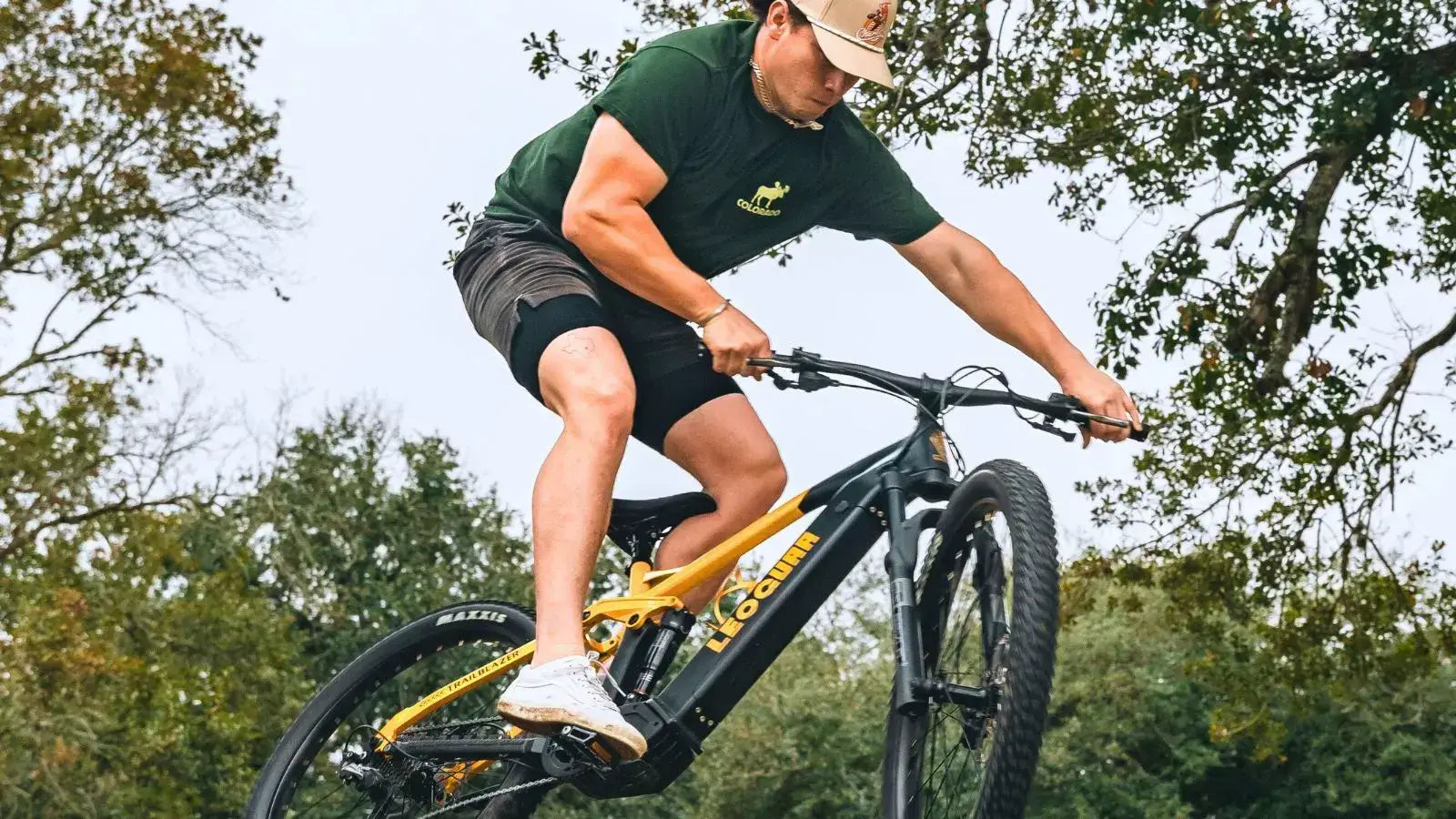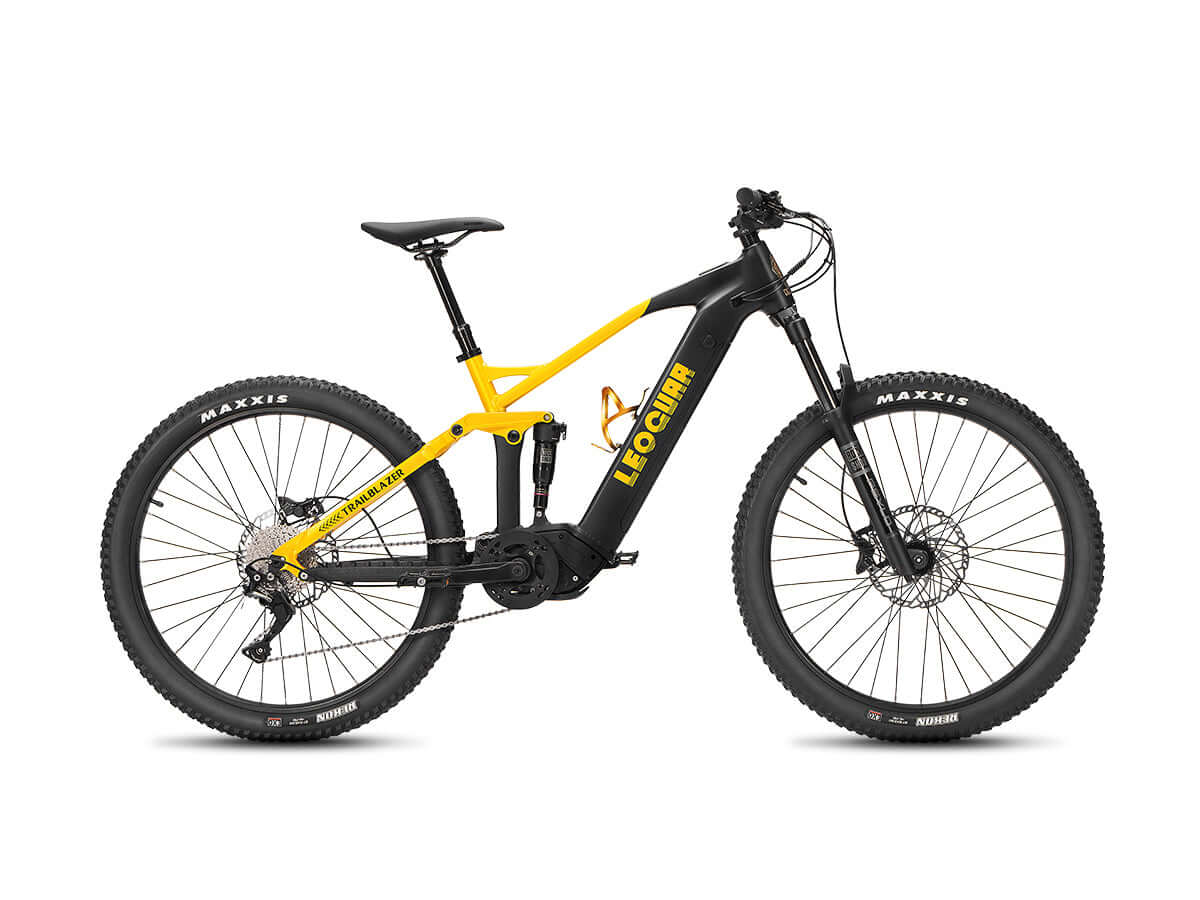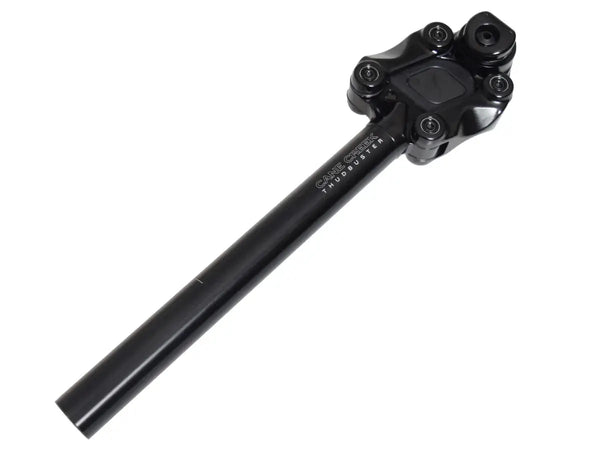
Best Full Suspension Electric Mountain Bikes Compared by Price and Performance
Choosing Your Perfect Electric Mountain Bike
Picking the right full suspension electric mountain bike is a big choice. With prices from a few thousand dollars to the cost of a small car, options can feel overwhelming. We're here to help you understand what's available. This guide breaks down the market into clear price levels and explains what you get for your money.
A full suspension mountain bike has both a front fork and rear shock to absorb bumps. This gives you better comfort and control on rough trails. Adding a motor makes you more powerful, so you can climb faster, ride farther, and tackle trails you never thought you could handle. Our goal is to help you find the perfect mix of cost and ability for what you need. Here's a quick look at our top picks:
| Category | Model Example | Price Est. | Key Highlight | Best For |
|---|---|---|---|---|
| Best Budget | Leoguar Trailblazer | ~$2,899 | Long Range & Suspension Value | New Trail Riders |
| Sweet Spot | Canyon Spectral:ON CF 8 | ~$6,000 | Performance per Dollar | All-Round Trail Tamers |
| Premium | Specialized Turbo Levo Pro | ~$11,000 | Top-Tier Tech & Integration | Riders Seeking the Best |
Understanding What You Pay For
What do you really get when you spend more on a full suspension electric mountain bike? The differences show up in three main areas: the motor system, the suspension, and the parts. Knowing these helps you decide what matters most for your riding style.
Motor and Battery Power
This is the heart of any e-bike. A higher price usually gets you a more powerful, efficient, and lighter system.
Motor Power comes from torque, measured in Newton-meters (Nm). This is the turning force that helps you climb steep hills. A motor with around 50-60Nm gives good help for easy trails. High-performance motors with 85Nm or more give you the power to tackle the steepest, most technical climbs without slowing down.
Battery Capacity is measured in Watt-hours (Wh). This decides how far you can ride your bike. While your weight, the terrain, and how much help you use are big factors, a larger Wh number means more possible miles per charge. A 500Wh battery works well for normal 1-2 hour rides, while 720Wh or bigger batteries are becoming standard for riders who want all-day adventures without worrying about running out of power.
Suspension Quality
Full suspension is what makes these bikes special. The quality greatly affects how the bike rides. Travel is how far the wheel can move to absorb a hit, measured in millimeters (mm). A bike with 130-150mm of travel is usually called a "trail" bike, perfect for all-around riding. Bikes with 160-180mm of travel are "enduro" bikes, built for high speeds on the roughest, steepest downhills.
Quality matters a lot here. Entry-level bikes might use simple coil shocks, while mid-to-high-end models have advanced air shocks. These let you adjust settings like rebound (how fast the shock returns after a hit) and compression (how it fights an impact), so you can tune the bike's feel to your weight and riding style.
Frame and Parts
The other parts are just as important. As price goes up, parts get lighter, last longer, and work better.
Frame Material makes a big difference. Aluminum is the reliable choice—strong, tough, and affordable. Carbon fiber is lighter, can be shaped in more complex ways, and gives a stiffer, more responsive ride feel, but it costs much more.
Drivetrain and Brakes need to handle the extra power. A better drivetrain (the gears and shifter) gives cleaner, more reliable shifting under the high load of an e-bike motor. Better brakes are equally important. While 2-piston brakes work fine for lighter use, powerful 4-piston brakes are needed for controlling a heavy e-bike on long, steep descents. These parts, combined with modern mountain bike geometry, give a bike confident and stable handling on challenging terrain.
Best E-MTBs by Budget
Here are our specific recommendations within three clear budget ranges. We've organized each recommendation to make comparison easy and clear.
Budget Options (Under $4,000)
This category focuses on value. You'll find solid aluminum frames, reliable but often heavier parts, and either a good hub-drive motor or an entry-level mid-drive system. These bikes are a great way to get into the sport without spending a fortune.
Leoguar Trailblazer
Price: ~$2,899
Key Specs: 500W Mid-drive Motor, 720Wh Battery, RockShox Full Suspension, 10-Speed Shimano Drivetrain
The Good: For under $3,000, the Leoguar Trailblazer offers an impressive blend of power, control, and durability. With a mid-drive motor, premium RockShox suspension, and hydraulic disc brakes, it delivers a genuinely capable trail experience. The 720Wh battery provides up to 100 miles of range—excellent for long rides in the backcountry or weekend mountain adventures.
Who It’s For: Riders looking for a full-suspension EMTB that punches well above its price tag. Perfect for entry-level to intermediate trail enthusiasts who want reliable components, long range, and great ride feel—without spending over $3,000.
Polygon Siskiu T6E
Price: ~$3,500
Key Specs: Shimano EP600 Motor (85Nm), 504Wh Battery, 150mm/140mm Travel
The Good: Gives you a powerful mid-drive motor and proven suspension design at a price that's hard to beat. It provides a real all-mountain experience that you can grow with. The Not-So-Good: Parts are functional but on the heavier side, and the smaller battery may limit very long rides. Who It's For: New or budget-conscious riders who want a truly capable full suspension electric mountain bike without breaking the bank.
Giant Stance E+
Price: ~$3,800
Key Specs: SyncDrive Sport Motor (75Nm), 500Wh Battery, 140mm/125mm Travel
The Good: Backed by Giant's huge dealer network for easy service and support. The ride is comfortable and confidence-building for new trail riders. The Not-So-Good: Less suspension travel makes it better for moderate trails rather than very rough terrain. Who It's For: Riders who value local bike shop support and want a reliable, comfortable e-bike for exploring local trails and bike paths.
Mid-Range Sweet Spot ($4,000 - $7,000)
This is where you get the most performance for your dollar. Expect powerful and refined mid-drive motors from brands like Bosch, Shimano, and Brose, high-quality air suspension, and strong part packages. Many of the best tested full suspension all-mountain/trail bike models fall into this range.
Canyon Spectral:ON CF 8
Price: ~$6,000
Key Specs: Shimano EP801 Motor (85Nm), 720Wh or 900Wh Battery, 155mm/150mm Travel
The Good: A benchmark for value. You get a lightweight carbon frame, a huge battery for massive range, and a well-thought-out part spec that's ready for aggressive riding. The Not-So-Good: Direct-to-consumer model means you handle final assembly and find your own maintenance. Who It's For: Enthusiast riders who are comfortable with basic bike mechanics and want the absolute most performance for their money.
Trek Rail 7
Price: ~$6,300
Key Specs: Bosch Performance Line CX Motor (85Nm), 750Wh Battery, 160mm/150mm Travel
The Good: Built around the powerful and reliable Bosch smart system. The frame geometry is set up for stability at speed, and Trek's ABP suspension stays active under braking. The Not-So-Good: It's a heavy bike, but that weight helps it feel planted on descents. Who It's For: All-mountain riders who want a robust, powerful e-bike from a top brand with excellent dealer support.
Premium Performance ($7,000+)
Welcome to the cutting edge. These bikes have lightweight carbon frames, top-level electronic shifting, highly tunable factory-level suspension, and carbon parts. This is where you'll find the best of the best with few compromises.
Specialized Turbo Levo Pro
Price: ~$11,000
Key Specs: Specialized Turbo Full Power 2.2 Motor (90Nm), 700Wh Battery, 160mm/150mm Travel
The Good: Unmatched integration between motor, battery, and display. The MasterMind TCU offers incredible customization options. The ride is intuitive, quiet, and exceptionally capable on any trail. The Not-So-Good: The price is a significant barrier, and proprietary system parts can be costly to replace. Who It's For: Tech-focused riders who want the most refined, integrated, and tunable e-bike experience available and are willing to pay for it.
Santa Cruz Heckler
Price: ~$9,000+ (for carbon models)
Key Specs: Shimano EP801 Motor (85Nm), 720Wh Battery, 160mm/150mm Travel
The Good: Features Santa Cruz's legendary VPP suspension for an amazing blend of pedaling efficiency and big-hit absorption. It has a lively, playful feel that aggressive riders love. The Not-So-Good: Premium boutique branding comes with a premium price tag across all part levels. Who It's For: Discerning riders who prioritize suspension feel and handling dynamics and appreciate the ride quality and reputation of a boutique brand.
Finding Your Riding Style Match
Beyond the spec sheet, the best full suspension electric mountain bike is the one that matches your personal riding style. Here are three common rider types to help you identify what to look for.
The Weekend Explorer
You ride flowing singletrack, fire roads, and are motivated by seeing new places. You want to cover more ground with less effort, and your priorities are comfort and maximum range.
What to look for: A bike from the "All-Rounder" category with 130-150mm of travel is perfect. Focus on a large battery (700Wh+) and comfortable, neutral geometry that won't feel overly aggressive on long days in the saddle.
The Technical Trail Tamer
You live for the challenge. You seek out tough, technical climbs and equally demanding descents filled with rocks, roots, and tight corners. You need a bike that is agile, powerful, and precise.
What to look for: A high-torque motor (85Nm+) is a must. Pair that with powerful 4-piston brakes and highly adjustable suspension. A "mullet" wheel setup (29" front, 27.5" rear) is a fantastic feature for this style, offering a blend of rollover and nimbleness.
The Gravity-Focused Shredder
For you, the climb is just the means to an end. The descent is your reward. You use the motor to do quick laps on the steepest, fastest, and roughest trails available. Durability and suspension performance are non-negotiable.
What to look for: Look at the "Premium" category for bikes with long travel (160mm+). You need robust parts, strong wheels, and gravity-focused geometry (a slack head angle below 65 degrees) for maximum stability at speed.
Real Ownership Costs
Your initial purchase is only part of the story. Based on our experience, here's a realistic look at the long-term costs for different tiers of e-bikes.
Budget Bikes (Under $4,000)
Our Experience: We've consistently seen entry-level drivetrains wear out faster under the high torque of an e-bike motor. A chain and cassette are parts that wear out. It's realistic to budget for their replacement within the first year of regular riding. Brakes may also need more frequent attention.

Mid-Range Bikes ($4,000 - $7,000)
Our Experience: These bikes hit the sweet spot for durability. Parts are generally designed to handle e-bike forces. The suspension can be fully serviced, and we strongly recommend an annual lower-leg service on the fork and an air-can service on the shock. This keeps them feeling new and prevents costly damage. The frames are excellent platforms for future upgrades if your skills outgrow the stock parts.
Premium Bikes ($7,000+)
Our Experience: While these parts are built to last, the cost of replacement is much higher. A simple crash that damages a carbon handlebar or an electronic derailleur can lead to a surprisingly expensive repair bill. The advanced suspension often needs specialized tools or professional service, adding to the long-term maintenance cost.
Final Decision Checklist
Before you make your final decision, run through this quick checklist to avoid common mistakes.
Sizing and Fit: This is the most important factor. An ill-fitting bike will be uncomfortable and hard to control, no matter how expensive it is. Double-check the manufacturer's size chart. If possible, test ride a bike with similar geometry.
Warranty and Support: Understand the warranty policy for the frame, motor, and battery. Is service handled by a local shop or directly with the brand? This is a key difference between buying from a local dealer and a direct-to-consumer brand.
Weight: Be realistic. Full suspension e-MTBs are heavy, often weighing over 50 lbs / 23 kg. Consider how you will transport it (car rack compatibility) and if you need to lift it up stairs.
Purchase Channel: Buying from a local bike shop provides professional assembly, fit advice, and ongoing service. Direct-to-consumer brands typically offer more competitive pricing but require you to handle final assembly and maintenance yourself.
Frequently Asked Questions
1. Q: How long do electric mountain bike batteries typically last?
A: Most e-bike batteries last 3-5 years or 500-1000 charge cycles before losing significant capacity. With proper care, including storing at 50% charge and avoiding extreme temperatures, you can maximize battery life. Replacement batteries typically cost $500-800.
2. Q: Can I ride a full suspension electric mountain bike without motor assistance?
A: Yes, you can ride with the motor turned off, but the extra weight (usually 15-20 lbs more than a regular bike) makes it significantly harder to pedal. Most riders use some level of assistance even on easy terrain to offset the added weight.
3. Q: What's the difference between hub drive and mid-drive motors?
A: Mid-drive motors are located at the bike's bottom bracket and work through the bike's gears, providing better balance and more natural pedaling feel. Hub drive motors are in the wheel hub and are typically less expensive but can make the bike feel unbalanced and don't work with the gears.
4. Q: How much maintenance do full suspension electric mountain bikes require?
A: Beyond regular bike maintenance like chain lubrication and brake adjustments, e-bikes need annual suspension service, battery care, and motor system updates. Budget an extra $200-400 per year for professional maintenance compared to a regular mountain bike.
5. Q: Are electric mountain bikes allowed on all trails?
A: Trail access varies by location and land management agency. Many traditional mountain bike trails now allow e-bikes, but some areas restrict them. Always check local regulations before riding, and remember that e-bike access is often limited to Class 1 bikes (pedal-assist only, no throttle).








































Leave a comment